Home>Garden Essentials>Garden Storage>Front Garden Ideas: 15 Ways To Create A Welcoming Impression
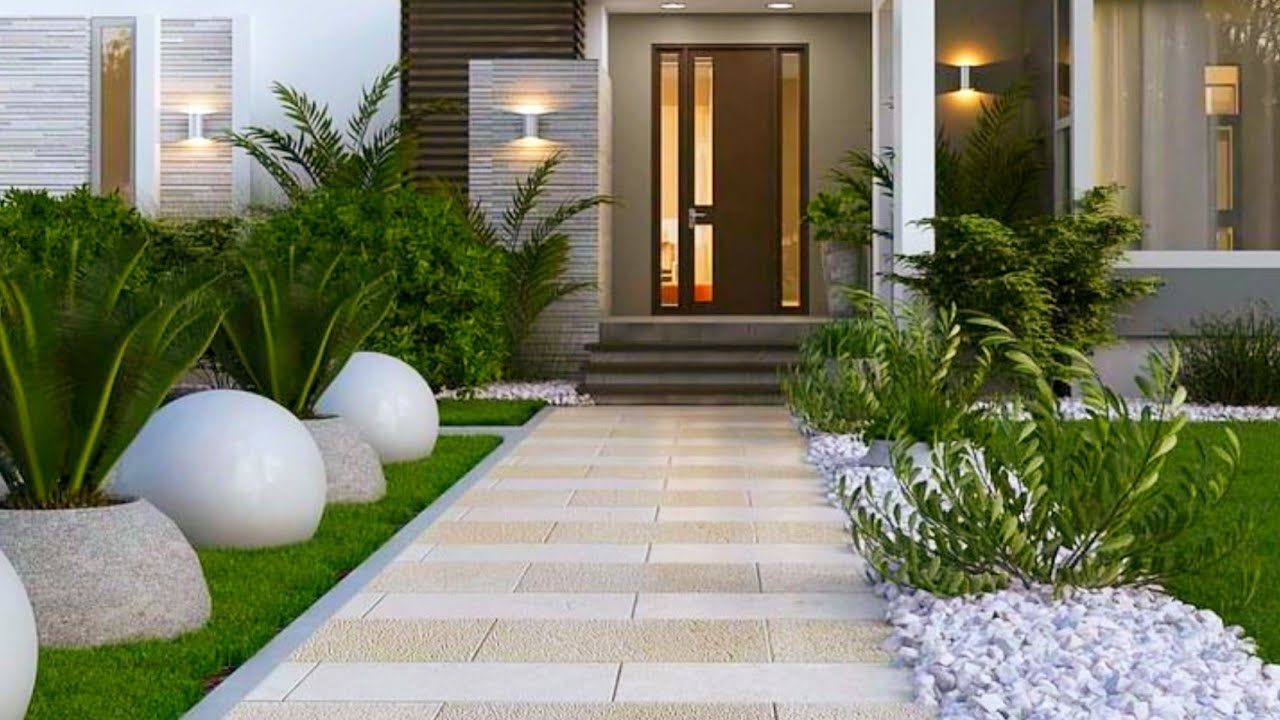

Garden Storage
Front Garden Ideas: 15 Ways To Create A Welcoming Impression
Modified: January 6, 2024
Looking for front garden storage ideas? Check out these 15 creative ways to create a welcoming impression while maximizing storage space.
(Many of the links in this article redirect to a specific reviewed product. Your purchase of these products through affiliate links helps to generate commission for Storables.com, at no extra cost. Learn more)
Introduction
Your front garden is the gateway to your home, the first impression visitors get of your property. It’s important to create a welcoming and inviting atmosphere that reflects your personal style and enhances your curb appeal. Whether you have a small patch of green or a sprawling front yard, there are countless ways to transform it into a beautiful and inviting space. In this article, we will explore 15 creative front garden ideas that will help you make a lasting impression.
From choosing the right plants to adding decorative elements and incorporating sustainable features, there are endless possibilities to customize your front garden to suit your taste and needs. With a little creativity and careful planning, you can turn your front garden into a stunning outdoor space that not only enhances the beauty of your home but also provides a warm welcome to all who enter.
So, let’s dive into these front garden ideas and discover how you can transform your outdoor space into a charming oasis that leaves a lasting impression.
Key Takeaways:
- Transform your front garden into a stunning oasis by choosing the right plants, adding a welcoming entrance, and incorporating unique elements like water features and sculptures.
- Create a welcoming and inviting outdoor space by implementing sustainable practices, maintaining cleanliness, and embracing your creativity to infuse your unique style into your front garden.
Choose the Right Plants
One of the most crucial aspects of creating a beautiful front garden is selecting the right plants. The plants you choose will determine the overall aesthetic and feel of your outdoor space. Consider the climate in your area, the amount of sun or shade your front garden receives, and the maintenance level you’re willing to commit to.
When selecting plants, aim for a mix of different colors, textures, and heights to create visual interest. Start by choosing anchor plants, such as shrubs or small trees, that will form the backbone of your front garden. These plants will provide structure and year-round greenery.
Next, choose perennials and annuals to add pops of color and seasonal interest. Perennials are plants that live for multiple years, while annuals typically last for one season. By combining both types of plants, you can ensure that your front garden remains vibrant and lively throughout the year.
Consider using native plants that are well-suited to your area’s climate. Native plants are generally easier to care for and require less water and maintenance. They also provide important habitat and food for local wildlife.
Additionally, think about the height and scale of the plants you choose. Taller plants can provide privacy and serve as a backdrop for smaller plants, while shorter plants can be used to frame walkways or entrances.
In terms of maintenance, choose plants that match your gardening skills and available time. If you prefer low-maintenance options, opt for plants that require minimal watering, pruning, and fertilizing. However, if you enjoy tending to your garden and have the time to dedicate to its upkeep, you can experiment with more high-maintenance plants.
Remember to also consider the overall style or theme you’re trying to achieve in your front garden. If you desire a formal look, choose plants with structured shapes and clean lines. For a cottage garden feel, opt for a mix of wildflowers and lush greenery.
Ultimately, selecting the right plants is the foundation for a stunning front garden. It’s a chance to showcase your personal style and create a visually pleasing landscape that sets the tone for your entire property.
Add a Welcoming Entrance
The entrance to your front garden sets the tone for your entire outdoor space. It’s the first thing visitors see, so it’s essential to make it welcoming and inviting. There are several ways to achieve this, depending on your personal style and the size of your front garden.
Start by enhancing your front entrance with a focal point, such as a decorative front door or an eye-catching piece of artwork. This will draw attention and create a sense of intrigue. Consider painting your front door in a bold color that complements the overall aesthetic of your home and garden.
Another way to create a welcoming entrance is by using plants and flowers. Place potted plants or hanging baskets on either side of your front door to add a touch of greenery and color. Choose plants that are suited to the lighting conditions of your front entrance and that reflect your personal style.
Incorporating lighting fixtures can also add an inviting ambiance to your front entrance. Install wall sconces or lanterns on either side of your front door to provide both functional and decorative lighting. This will enhance the safety of your entrance while creating a warm and welcoming atmosphere.
Don’t forget about the path that leads to your front entrance. Whether it’s a paved walkway or a meandering stone path, ensure that it is well-maintained and free from any obstacles. Consider adding edging or border plants to define the path and create a sense of structure.
Personalize your front entrance by adding decorative elements that resonate with your style. This could include a welcome mat, a seasonal wreath, or a door knocker with a unique design. These small touches make a big difference in creating a welcoming and personalized entrance.
Lastly, don’t underestimate the power of cleanliness and tidiness. Keep your front entrance clean and well-maintained by regularly sweeping away any debris, cleaning windows, and trimming any overgrown plants or shrubs. A neat and well-kept entrance immediately conveys a sense of care and attention to detail.
By adding a welcoming entrance to your front garden, you create an inviting atmosphere that sets the stage for the rest of your outdoor space. It’s the first impression visitors get of your home, so make it memorable and reflective of your personal style.
Install a Charming Pathway
A charming pathway not only serves a practical purpose of guiding visitors to your front door, but it also adds character and visual appeal to your front garden. Installing a well-designed pathway can instantly elevate the overall aesthetic of your outdoor space. Here are a few ideas to help you create a charming pathway:
1. Choose the right materials: The material you choose for your pathway can make a big difference in its overall look and feel. Popular options include flagstone, gravel, brick, or concrete pavers. Consider the style and theme of your home and garden when selecting the material for your pathway.
2. Opt for a meandering layout: Instead of a straight and rigid path, consider creating a meandering pathway that curves and winds its way through your front garden. This adds a sense of intrigue and encourages visitors to explore your outdoor space.
3. Add edging: Enhance the visual appeal of your pathway by incorporating edging. This can be achieved through the use of natural stones, low-growing plants, or metal or plastic edging materials. Edging helps define the pathway and gives it a clean and polished look.
4. Consider stepping stones: If you prefer a more natural and informal look, consider using stepping stones as your pathway. These can be placed strategically amongst a lush grass or ground cover to create a charming and whimsical effect.
5. Use lighting: Illuminate your pathway with outdoor lighting to create a magical and inviting atmosphere. You can install solar-powered lights along the edge of the pathway or incorporate lighting fixtures that are strategically placed to highlight specific areas.
6. Incorporate plants and flowers: To soften the pathway and add beauty, consider planting low-growing plants or flowers along the edges of the pathway. This creates a seamless transition between the pathway and the surrounding garden.
7. Create focal points: To make your pathway even more charming, consider adding focal points along the way. This could be a decorative bench, a sculpture, or a colorful flower bed. These focal points break up the pathway and create visual interest.
8. Add seating areas: If space allows, consider creating small seating areas along your pathway. This provides a cozy spot for relaxation and allows you to fully enjoy your front garden. You can include a bench, chairs, or even a hammock for ultimate relaxation.
A charming pathway adds a sense of whimsy and elegance to your front garden. It invites visitors to explore and enjoy your outdoor space while enhancing the overall aesthetic of your home. Take the time to plan and design a pathway that reflects your personal style and complements the overall theme of your front garden.
Incorporate a Beautiful Front Gate
A front gate is not only a functional element that provides security and privacy, but it is also an opportunity to make a statement and enhance the visual appeal of your front garden. Incorporating a beautiful front gate adds charm and elegance to your outdoor space, creating a welcoming entrance for your home. Here are a few ideas to help you design and incorporate a stunning front gate:
1. Choose the right style: The style of your front gate should complement the overall aesthetic of your home and front garden. Whether you prefer a classic wrought iron gate, a rustic wooden gate, or a modern metal gate, select a style that resonates with your personal taste and blends harmoniously with the surrounding environment.
2. Pay attention to details: The details of your front gate can make a big difference in its overall appeal. Consider decorative elements like scrollwork, finials, or customized designs that speak to your individual style. Choosing hardware, such as handles and hinges, that complements the gate’s design can also enhance its visual impact.
3. Add greenery: Soften the look of your front gate by incorporating greenery. Plant climbing vines or ivy along the gate, allowing them to cascade and create a lush and inviting entrance. This not only adds beauty but also provides additional privacy and a connection to the surrounding garden.
4. Illuminate the gate: Install outdoor lighting fixtures that highlight the beauty of your front gate. Consider wall sconces or spotlights that illuminate the gate and accentuate its details during the evening hours. This not only enhances the gate’s visual appeal but also provides safety and security for your front entrance.
5. Create a grand entrance: If you have the space and budget, consider designing a grand entrance with pillars or columns on either side of your front gate. This architectural feature adds grandeur and elegance, making a bold statement that enhances the overall aesthetic of your front garden.
6. Consider functionality: While aesthetics are important, ensure that your front gate is practical and functional. Choose a gate that is easy to open and close, and consider incorporating features such as automatic openers or intercom systems for added convenience and security.
7. Maintain and upkeep: Regularly clean and maintain your front gate to keep it looking its best. This includes painting or refinishing if necessary, tightening any loose components, and ensuring that the gate operates smoothly. A well-maintained front gate adds to the overall beauty and curb appeal of your home.
Incorporating a beautiful front gate adds a touch of elegance and sophistication to your front garden. It not only enhances the visual appeal of your outdoor space but also provides security and sets the tone for your entire property. With careful planning and attention to detail, you can design a front gate that becomes a focal point and a reflection of your personal style.
Create a Vibrant Flower Bed
A vibrant flower bed is a surefire way to bring color, life, and beauty to your front garden. It adds a touch of charm and elegance, creating a visual spectacle that captivates the eyes of passersby. Here are some tips on how to create a vibrant flower bed that will make your front garden truly stand out:
1. Choose a variety of flowers: Select a mix of flowers with different colors, shapes, and heights to create a visually appealing flower bed. Choose flowers that bloom at different times of the year to ensure continuous color throughout the seasons. Consider incorporating annuals, perennials, and even bulbs for a diverse and vibrant display.
2. Plan your color palette: Decide on a color scheme for your flower bed to create a harmonious and cohesive look. You can opt for a monochromatic scheme using different shades of a single color for a more soothing and elegant feel. Alternatively, you can go for a contrasting scheme that combines complementary colors to create a bold and eye-catching effect.
3. Consider the height and size: Arrange your flowers based on their height and size. Place taller flowers towards the back of the bed and shorter ones towards the front, creating a layered and visually dynamic display. This will ensure that every flower is visible and that none are overshadowed.
4. Add foliage and texture: Incorporate plants with interesting foliage and texture to add depth and visual interest to your flower bed. Mix in plants with different leaf shapes, colors, and textures, such as ornamental grasses or plants with variegated leaves. These additions will add a unique and dynamic element to your flower bed.
5. Provide adequate spacing: Avoid overcrowding your flower bed and allow enough space for each plant to grow and thrive. This will prevent competition for nutrients and ensure that the flowers have enough airflow to prevent disease and promote healthy growth. Follow the spacing recommendations for each type of flower to achieve the best results.
6. Consider bloom time: Plant flowers with staggered bloom times to ensure that your flower bed is in constant bloom throughout the growing season. This will provide an ever-changing display of vibrant colors and prevent any gaps in the visual appeal of your front garden. Research the flowering times of different plants and plan your selection accordingly.
7. Maintain your flower bed: Regular maintenance is essential to keep your flower bed vibrant and healthy. This includes watering, fertilizing, deadheading spent flowers, and removing any weeds or unwanted plants. Stay on top of any necessary care routines to ensure that your flower bed continues to thrive and dazzle.
A vibrant flower bed is a surefire way to bring life and color to your front garden. By carefully selecting a variety of flowers, planning your color palette, and considering the height and size of each plant, you can create a stunning display that adds a touch of natural beauty to your outdoor space. With proper care and maintenance, your flower bed will flourish and provide you with year-round enjoyment.
Install Outdoor Lighting
Outdoor lighting not only enhances the beauty and ambiance of your front garden but also improves its functionality and safety. Well-placed lighting fixtures can accentuate the key features of your space, create a warm and inviting atmosphere, and provide illumination for nighttime activities. Here are some ideas on how to install outdoor lighting in your front garden:
1. Focus on key areas: Identify the key areas of your front garden that you want to highlight with lighting. This could include the front entrance, pathways, trees, or architectural features. By strategically placing lights in these areas, you can draw attention and create a visually stunning effect.
2. Choose the right type of lighting: There are various types of outdoor lighting available, such as spotlights, path lights, wall sconces, and string lights. Consider the purpose of each area and select the appropriate type of lighting fixture. For example, path lights can guide visitors to your front entrance, while spotlights can highlight a beautiful tree or sculpture.
3. Install low-voltage lighting: Opt for low-voltage lighting fixtures to minimize energy consumption and reduce your environmental footprint. These fixtures are also safer to install, as they operate on a lower voltage than traditional high-voltage lighting.
4. Use LED lights: LED lights are energy-efficient, long-lasting, and provide a bright and clear illumination. They are an excellent choice for outdoor lighting, as they consume less energy and require less frequent bulb replacements compared to traditional incandescent bulbs.
5. Incorporate motion-sensor lights: Installing motion-sensor lights in strategic locations can enhance security and energy efficiency. These lights automatically turn on when they detect movement, deterring potential intruders and saving energy by only activating when needed.
6. Consider decorative lighting: Adding decorative lighting elements can create a magical and enchanting atmosphere in your front garden. String lights, lanterns, or fairy lights can be hung from trees or wrapped around pergolas, adding a touch of whimsy and charm.
7. Think about lighting control: Consider using a lighting control system that allows you to customize and control your outdoor lighting. This can include features like dimming options, timers, and remote control access, giving you the flexibility to adjust the lighting settings based on your preferences and needs.
8. Seek professional installation: If you’re unsure about installing outdoor lighting yourself, it’s best to seek professional help. A qualified electrician or landscaping specialist can ensure that the lights are installed safely and properly, maximizing both their functionality and aesthetic impact.
Installing outdoor lighting in your front garden is a wonderful way to enhance its beauty and functionality. By selecting the right type of lighting, focusing on key areas, and considering energy-efficient options, you can create a stunning and well-lit outdoor space that welcomes guests and adds value to your home.
Add a Focal Point
Adding a focal point to your front garden creates a visually striking element that immediately captures attention and adds interest to your outdoor space. A well-chosen focal point can serve as a centerpiece, drawing the eye and creating a sense of intrigue. Here are some ideas on how to incorporate a focal point in your front garden:
1. Water features: A water feature, such as a fountain, pond, or birdbath, can be a mesmerizing focal point in your front garden. The sound of running water adds a soothing ambiance, while the visual appeal of sparkling water enhances the overall aesthetic. Choose a size and design that complements the scale and style of your garden.
2. Sculptures and statues: Consider adding a sculpture or statue to your front garden to create an eye-catching focal point. This could be a modern abstract sculpture, a classical Greek-inspired statue, or a whimsical animal sculpture. Select a piece that resonates with your personal taste and complements the overall theme of your front garden.
3. Ornamental trees and shrubs: Planting an ornamental tree or shrub in a prominent location can create a natural focal point. Choose a species with interesting foliage, bark, or flowers that stands out from the surrounding vegetation. Prune and shape the tree to enhance its visual impact and draw attention to its unique features.
4. Statement planters: Large, decorative planters can serve as focal points in your front garden. Choose a bold color or unique design that stands out and fills the space with vibrant flowers or lush greenery. Place the planters strategically, whether flanking the entrance or positioned along a pathway, to create visual interest and a sense of symmetry.
5. Arbors and pergolas: Installing an arbor or pergola in your front garden provides both structure and a focal point. Train climbing plants to grow over the structure, adding beauty and creating a stunning visual display. This architectural feature not only draws the eye but also introduces depth and height to your outdoor space.
6. Artistic focal points: Be creative and incorporate unique, artistic focal points in your front garden. This could be a mosaic wall, a colorful mural, or an outdoor art installation. These artistic elements bring a sense of individuality and creativity to your outdoor space, creating a true statement piece.
7. Specimen plants: Choose a distinctive and unique plant as your focal point. This could be a tree with unusual bark, a flowering shrub with vibrant blooms, or a specimen plant with striking foliage. Position it in a prominent location where it can shine and become the focal point of your front garden.
8. Eye-catching pathways: Create a focal point by designing a stunning pathway that leads the eye and creates a sense of anticipation. This could be a pathway made of colorful mosaic tiles, a winding path bordered with vibrant flowers, or a pathway flanked with statues or sculptures. Such pathways naturally guide the attention and serve as a focal point themselves.
By adding a focal point to your front garden, you create a visually captivating element that becomes the focal point of the entire space. Consider the scale, style, and theme of your garden when selecting the focal point, and ensure that it enhances the overall ambiance and aesthetics of your outdoor area.
Use Decorative Containers
Decorative containers are a versatile and stylish way to add visual interest and enhance the beauty of your front garden. Whether you have a small balcony or a spacious front yard, incorporating decorative containers can instantly transform any space. Here are some ideas on how to use decorative containers to elevate your front garden:
1. Choose the right containers: Select containers that complement the style and theme of your front garden. Consider the material, color, shape, and size of the containers. Clay pots bring a rustic and natural feel, while sleek metal or ceramic containers offer a modern and contemporary look. Ensure that the containers are sturdy and have proper drainage to maintain the health of your plants.
2. Create focal points: Place larger containers strategically to create focal points in your front garden. These can be positioned at the entrance, along pathways, or on either side of the front door. Choose plants with vibrant colors or unique shapes to draw attention and make a statement.
3. Add height and dimension: Use containers of varying heights to add visual interest and create depth in your front garden. Place taller containers with upright plants behind shorter containers. This will add layers and dimension to your outdoor space, making it more visually appealing.
4. Mix and match plants: Experiment with different combinations of plants in your containers to create a dynamic and colorful display. Choose plants with contrasting textures, colors, and growth habits. Combine trailing plants with upright ones to create a cascading effect, or mix flowers with foliage plants for a balanced and captivating arrangement.
5. Incorporate ornamental grasses: Ornamental grasses are an excellent choice for containers as they add movement, texture, and a natural element to your front garden. Choose varieties with interesting seed heads or colorful foliage to make a striking statement in your containers.
6. Play with scale: Experiment with containers of different sizes to add visual interest. Place smaller containers on windowsills, steps, or tabletops, and larger containers on the ground or elevated pedestals. This adds diversity and creates a sense of scale in your front garden.
7. Consider seasonal displays: Update your decorative containers with seasonal displays to keep your front garden fresh and inviting throughout the year. Use plants with seasonal blooms, foliage, or berries to reflect the changing seasons. Replant containers with flowers, herbs, or vegetables that thrive during specific times of the year.
8. Use unusual containers: Get creative and think outside the box when it comes to containers. Repurpose old buckets, barrels, or even vintage items like watering cans or wheelbarrows as unique and charming containers. These unconventional containers add character and a touch of whimsy to your front garden.
Using decorative containers is a simple and effective way to add style, color, and personality to your front garden. By carefully selecting containers, combining plants with contrasting textures, and considering seasonal displays, you can create stunning arrangements that enhance the overall aesthetic and curb appeal of your home.
Consider adding a variety of plants with different heights, textures, and colors to create visual interest in your front garden. This will help to create a welcoming and inviting impression for visitors.
Design a Cozy Seating Area
Creating a cozy seating area in your front garden not only adds functionality, but it also provides a space to relax, unwind, and enjoy the beauty of your outdoor space. Whether you have a small front porch or a larger yard, designing a comfortable seating area will enhance the overall ambiance of your front garden. Here are some tips to help you create a cozy seating area:
1. Determine the size and location: Assess the available space in your front garden and determine the ideal location for your seating area. Consider factors such as privacy, sun exposure, and proximity to other features like gardens or pathways. Choose a spot that offers a pleasant view and a sense of tranquility.
2. Choose comfortable seating: Select comfortable and weather-resistant seating options for your front garden. This could include outdoor lounge chairs, benches, porch swings, or even a cozy outdoor sofa. Add cushions and pillows for extra comfort and a pop of color.
3. Incorporate shade: Provide shade in your seating area to make it more enjoyable during hot and sunny days. This could be achieved through the use of patio umbrellas, awnings, pergolas, or natural shading from trees or bushes. This will create a comfortable and inviting space to relax and enjoy your front garden.
4. Add a coffee table or side tables: Include a coffee table or side tables in your seating area for convenience and functionality. This provides a surface to place drinks, books, or snacks while enjoying your outdoor space. Choose materials that are weather-resistant and easy to clean.
5. Decorate with cozy accessories: Enhance the coziness of your seating area by adding cozy accessories. Consider adding outdoor rugs, throw blankets, and outdoor pillows to create a warm and inviting atmosphere. Choose fabrics and materials that are weather-resistant and easy to maintain.
6. Incorporate lighting: Install outdoor lighting near your seating area to extend its usability into the evening hours. This can include string lights, lanterns, or even built-in lighting fixtures. Lighting not only enhances the ambience but also provides safety and visibility after dark.
7. Integrate planters and greenery: Surround your seating area with planters and potted plants to create a sense of tranquility and privacy. Choose plants with soothing scents or vibrant blooms to add beauty and create a refreshing atmosphere. This will also enhance the connection between nature and your cozy seating area.
8. Consider privacy: If privacy is a concern, incorporate elements such as trellises, plant screens, or tall hedges to create a sense of seclusion in your seating area. This will make it feel like a private oasis where you can relax and disconnect from the outside world.
Designing a cozy seating area in your front garden provides a space to unwind, enjoy the outdoors, and connect with nature. By carefully choosing comfortable seating, incorporating shade, adding decorative accessories, and incorporating greenery, you can create a welcoming and peaceful spot where you can sit back, relax, and savor the beauty of your front garden.
Incorporate Water Features
Adding water features to your front garden can create a sense of tranquility, promote relaxation, and enhance the overall aesthetic appeal of your outdoor space. Whether you have a large yard or a small patio, incorporating a water feature can add a touch of serenity and create a soothing ambiance. Here are some ideas on how to incorporate water features into your front garden:
1. Fountain: A fountain is a classic choice for adding a water feature to your front garden. It can serve as a focal point and create a beautiful visual display with the sound of cascading water. Whether you prefer a tiered fountain, a wall-mounted fountain, or a free-standing one, choose a style that complements the overall aesthetic of your front garden.
2. Pond: If you have enough space, consider adding a small pond in your front garden. Ponds not only add visual appeal but also provide a habitat for aquatic plants and animals. You can incorporate a variety of water plants, fish, or even a small waterfall to create a serene and peaceful setting.
3. Birdbath: A birdbath is a simple and charming water feature that attracts birds and adds a touch of elegance to your front garden. Choose a birdbath with a shallow basin and place it in an open and visible area. Adding stones or pebbles in the basin provides perching spots and helps birds access the water.
4. Waterfall: If you want to create a dramatic and visually stunning water feature in your front garden, consider incorporating a waterfall. This could be a natural-looking waterfall flowing into a small pond or a cascading waterfall feature on a stone wall. The sound and sight of water gracefully flowing down create a tranquil and captivating atmosphere.
5. Wall-mounted water feature: If you have limited space, a wall-mounted water feature can be a perfect solution. These features create a vertical element, adding visual interest to your front garden. Choose a design that complements the style of your home, such as a mosaic tile wall or a simple bubbling water wall.
6. Water containers: Another option for incorporating a water feature is to use containers. This can include small decorative bowls, tiered urns, or even repurposed items like old barrels or wine barrels. Fill these containers with water and add floating water plants or colorful pebbles to create a visually appealing display.
7. Reflecting pool: A reflecting pool can add a touch of elegance and serenity to your front garden. This shallow pool of still water creates a mirror-like reflection and can be surrounded by lush greenery or beautiful flowers. The stillness of the water surface adds a calming and contemplative element to your outdoor space.
8. Incorporate lighting: Illuminate your water feature with outdoor lighting to create a magical ambiance during the evening hours. Underwater lights, spotlights, or strategically placed outdoor light fixtures can highlight the beauty of the water and create a stunning visual effect.
Incorporating water features into your front garden adds a sense of tranquility and beauty. The sound of flowing water, the sight of reflections, and the presence of aquatic life can create a serene and captivating atmosphere. Whether you choose a small fountain, a pond, or a wall-mounted water feature, incorporating water into your front garden will elevate its aesthetic appeal and provide a peaceful escape for you and your guests.
Utilize Vertical Gardening
Vertical gardening is an excellent solution for maximizing space and adding visual interest to your front garden. By utilizing vertical spaces, you can create a lush and vibrant garden even in limited areas. Whether you have a small balcony or a narrow strip of land, here are some ideas on how to incorporate vertical gardening into your front garden:
1. Vertical planters: Install vertical planters on walls, fences, or trellises to create a vertical garden. These planters come in various sizes and materials, allowing you to grow a variety of plants. Fill them with flowering vines, herbs, or cascading plants to create a stunning and dynamic display.
2. Living walls: Create a living wall by installing modular planter systems or planting pockets on a sturdy vertical structure. These walls can be freestanding or attached to an existing wall. Fill them with a variety of plants to create a beautiful and eye-catching vertical garden. This not only adds visual interest but also helps to purify the air and reduce noise pollution.
3. Espalier fruit trees: Espalier is a technique of training fruit trees to grow flat against a wall or trellis, creating a living tapestry of foliage and fruit. This not only saves space but also adds an architectural element to your front garden. Choose fruit trees that are suitable for espalier, such as apple, pear, or fig.
4. Hanging baskets or planters: Hang baskets or planters from overhead structures, such as pergolas or awnings, to add vertical layers to your front garden. Fill the baskets with trailing flowers, ferns, or herbs for a cascading effect. This adds depth and visual interest to your outdoor space without taking up valuable ground space.
5. Trellises and arbors: Install trellises or arbors in your front garden to support climbing plants or vines. This vertically structured element adds height and texture to your outdoor space. Train flowering vines, such as clematis or climbing roses, to grow along the trellises or arbors for a stunning display.
6. Vertical herb or vegetable garden: Create a vertical herb or vegetable garden by using hanging planters or vertical planters. This allows you to grow a variety of fresh herbs or vegetables in a compact space. Choose plants that have similar growing requirements and consider their sunlight and water needs when arranging them.
7. Tiers or shelves: Install tiered shelving units to create multiple levels for showcasing potted plants. Place taller plants at the back and shorter ones toward the front to create depth and visual interest. This not only saves space but also adds a decorative feature to your front garden.
8. Use fences or walls: Attach planter boxes, shelving, or hanging baskets to fences or walls to create a vertical gardening space. This allows you to utilize the existing structural elements for your garden, adding greenery and beauty to otherwise unutilized areas.
Vertical gardening opens up a world of possibilities for creating a lush and vibrant front garden, regardless of the available space. By incorporating vertical planters, living walls, espalier fruit trees, or hanging baskets, you can maximize your garden’s potential and create a stunning visual display. Embrace the vertical space and let your creativity flourish.
Add Unique and Quirky Elements
Adding unique and quirky elements to your front garden injects personality and character, making it truly stand out from the rest. These elements reflect your individuality and can make your front garden a conversation starter. Here are some ideas on how to incorporate unique and quirky elements into your outdoor space:
1. Whimsical sculptures or art pieces: Place eye-catching sculptures or art pieces throughout your front garden to add a touch of whimsy. These can be sculptures of animals, abstract shapes, or even repurposed items creatively transformed into unique artworks. Opt for pieces that reflect your personality and bring a smile to your face.
2. Colorful and unconventional planters: Use unconventional items as planters to add a playful and unconventional touch to your front garden. Repurpose old boots, vintage teapots, or colorful buckets as containers for your plants. Get creative and think outside the box when selecting items for your unique planters.
3. Pops of vibrant colors: Incorporate vibrant and bold colors throughout your front garden to create a lively and energetic atmosphere. This could be through colorful plantings, brightly painted fences or walls, or even colorful outdoor furniture. The vivid colors will add a sense of fun and playfulness to your outdoor space.
4. Quirky signage or labels: Add hand-painted signage or labels to your garden to give it a personalized touch. These can be humorous quotes, clever garden sayings, or even labels with unique names for each area or plant. Let your creativity shine and showcase your sense of humor with these quirky additions.
5. Funky or repurposed furniture: Consider using funky or repurposed furniture pieces in your front garden to add a touch of uniqueness. This could be a colorful vintage bench, a swing made from an old wooden pallet, or chairs painted in vibrant hues. These furniture pieces become statement pieces that create a memorable impression.
6. Unconventional pathways or stepping stones: Opt for unconventional materials or designs when creating pathways or stepping stones in your front garden. Use mosaic tiles, broken ceramics, or reclaimed stones to add an unconventional and artistic touch to your outdoor space. These unique pathways become a visual focal point that adds character and charm.
7. Upcycled garden decor: Repurpose old household items or salvaged materials to create unique garden decor. Turn an old ladder into a vertical plant display, transform old tires into planter beds, or use wine bottles as garden borders. Upcycling adds a touch of sustainability and creativity to your front garden.
8. Theme-inspired elements: Embrace a theme and incorporate elements that reflect it in your front garden. Whether it’s a beach-inspired oasis, a whimsical fairy garden, or a Mediterranean-inspired courtyard, take creative liberties in selecting accessories, plants, and decor that align with your chosen theme.
Adding unique and quirky elements to your front garden allows you to express your creativity and showcase your individual style. Embrace unconventional art pieces, repurposed items, vibrant colors, and out-of-the-box ideas to create a front garden that is truly one-of-a-kind. Let your personality shine through these unique and quirky additions.
Create Privacy with Hedges or Fences
Creating privacy in your front garden not only provides a sense of seclusion but also allows you to enjoy your outdoor space without feeling exposed to the outside world. Hedges or fences are practical and effective solutions for adding privacy to your front garden. Here are some ideas on how to create privacy with hedges or fences:
1. Plant hedges: Planting hedges is a natural way to create privacy in your front garden. Choose fast-growing evergreen varieties, such as Leyland cypress, boxwood, or Privet, that provide year-round coverage. Maintain the hedges by regular pruning to the desired height and shape.
2. Install fence panels: Erecting fence panels is an easy and popular method to create privacy in your front garden. Choose fence materials, styles, and heights that complement the overall aesthetic of your home and garden. Consider options such as wood, wrought iron, bamboo, or vinyl, depending on your desired level of privacy and maintenance.
3. Combine hedges and fences: Integrating hedges with fence panels can create a harmonious privacy solution. Plant hedges along the boundary and install fence panels above to add height and provide additional screening. This combination creates a layered effect that enhances privacy while adding texture and visual interest to your front garden.
4. Position screening plants: Place potted or container plants strategically to create privacy in specific areas of your front garden. Use tall plants, such as ornamental grasses or tall shrubs, to block sightlines from neighboring properties or the street. This flexible option allows you to adjust the positioning of the plants based on your privacy needs.
5. Incorporate lattice screens: Lattice screens are decorative panels with an open-weave design that can be mounted on fences or used as standalone features. You can train climbing plants like jasmine or honeysuckle to grow on the lattice, creating a natural privacy screen with beautiful blossoms or foliage.
6. Add privacy curtains or blinds: If you have a covered front porch or outdoor seating area, consider adding privacy curtains or blinds. These can be made of weather-resistant fabric or bamboo and can be easily pulled back or closed to create privacy when desired. This option allows for flexibility in managing your privacy preferences.
7. Use tall decorative grasses: Incorporate tall ornamental grasses, such as Miscanthus or Pampas grass, to create a natural privacy barrier in your front garden. These grasses provide height, texture, and movement while adding a touch of elegance to your outdoor space.
8. Apply window treatments: Enhance privacy inside your home by applying window treatments like curtains, blinds, or shutters. This ensures that your front garden remains a private space while allowing you to enjoy the beauty of the outdoors from the comfort of your home.
Creating privacy with hedges or fences allows you to enjoy your front garden in solitude and enhances the overall ambiance of your outdoor space. Whether you choose to plant hedges, install fence panels, or utilize a combination of both, establishing privacy ensures that you can fully experience the tranquility of your front garden.
Implement Sustainable and Eco-Friendly Elements
Incorporating sustainable and eco-friendly elements into your front garden not only benefits the environment but also promotes a healthier and more harmonious outdoor space. By making conscious choices and using eco-friendly practices, you can create a front garden that is not only visually appealing but also contributes to a more sustainable future. Here are some ideas on how to implement sustainable and eco-friendly elements in your front garden:
1. Native plantings: Choose native plants that are well-suited to your local climate and require less water and maintenance. Native plants have adapted to the local ecosystem and provide important habitat and food for local wildlife. They also require fewer pesticides and fertilizers, reducing the impact on the environment.
2. Drought-tolerant landscaping: Opt for plants that are adapted to drought conditions to minimize water usage. Incorporate xeriscaping principles, such as using rocks or mulch for ground cover and selecting plants with low water requirements. This reduces the need for excessive irrigation and conserves water resources.
3. Rainwater harvesting: Install a rainwater harvesting system to collect and reuse rainwater in your front garden. Place rain barrels or cisterns to capture rainwater from downspouts, and use this collected water for watering your plants. This reduces reliance on municipal water supplies and conserves water resources.
4. Composting: Start a composting system to recycle organic waste from your kitchen and garden. Use compost as a natural and nutrient-rich fertilizer for your plants. This reduces the need for chemical fertilizers and reduces waste sent to landfills.
5. Natural pest control methods: Implement natural pest control methods to minimize the use of harmful pesticides. Encourage natural predators like ladybugs or birds that eat pests in your garden. Use organic pest control products or make your own natural sprays using ingredients like neem oil or soap solutions.
6. Renewable materials: Choose renewable and sustainable materials for hardscaping elements in your front garden. Use reclaimed or repurposed materials like recycled wood, salvaged bricks, or stones. Look for products with the Forest Stewardship Council (FSC) certification, indicating responsible forestry practices.
7. Energy-efficient lighting: Install energy-efficient outdoor lighting fixtures in your front garden. Use LED bulbs that consume less energy and have a longer lifespan compared to traditional incandescent bulbs. Consider installing motion sensors or timers to further conserve electricity.
8. Bee-friendly and pollinator gardens: Create a bee-friendly and pollinator garden by planting flowers that attract bees, butterflies, and other pollinators. These gardens help support declining pollinator populations and promote biodiversity. Avoid using chemical pesticides that harm pollinators.
By implementing sustainable and eco-friendly elements in your front garden, you contribute to a healthier environment and create a space that aligns with your values. Adopting practices such as using native plants, implementing rainwater harvesting, and focusing on natural pest control methods not only reduce environmental impact but also enhance the overall beauty and resilience of your front garden.
Maintain Cleanliness and Tidiness
Keeping your front garden clean and tidy is essential for creating a welcoming and inviting outdoor space. Regular maintenance not only enhances the overall appearance of your garden but also contributes to a sense of pride and well-being. Here are some tips on how to maintain cleanliness and tidiness in your front garden:
1. Regularly remove debris: Conduct regular cleanups to remove fallen leaves, twigs, and other debris from your front garden. Sweep or rake the area, paying extra attention to pathways, patios, and entrances. Dispose of the debris properly to maintain a clutter-free and organized space.
2. Weed regularly: Stay on top of weed control by regularly removing weeds from your front garden. Use a hand tool or a garden hoe to gently remove weeds at their roots. This prevents weeds from overtaking your plants and keeps your garden looking neat and well-maintained.
3. Trim and prune plants: Prune your plants regularly to maintain their shape and size. Remove dead, damaged, or overgrown branches to promote healthier growth and improve the overall appearance of your front garden. Trim shrubs and hedges to keep them tidy and prevent them from encroaching on walkways or windows.
4. Keep pathways clean: Clear pathways of dirt, debris, and overgrown plants to ensure safe and easy access to your front entrance. Sweep or pressure wash pathways regularly to remove dirt and stains. Trim any grass or plants that encroach on pathways to maintain a clean and well-defined walkway.
5. Properly dispose of waste: Dispose of garden waste appropriately by composting organic materials or disposing of them in designated green waste or yard waste bins. For any non-organic waste or materials, follow local regulations and dispose of them in the proper waste disposal containers to maintain a clutter-free and environmentally conscious front garden.
6. Maintain clean and functional structures: Regularly clean and maintain structures such as fences, gates, furniture, or decorative elements in your front garden. Check for any signs of damage, deterioration, or rust and address them promptly. Clean and repair any structures as needed to keep them looking their best.
7. Properly store tools and equipment: Keep your gardening tools and equipment organized and stored properly. Place them in a designated area or shed to prevent clutter in your front garden. Clean and maintain your tools regularly to ensure they are in good working condition and ready for use.
8. Pay attention to details: Finally, pay attention to small details that can make a big difference in maintaining cleanliness and tidiness. Trim any grass or weeds growing in cracks or crevices, remove cobwebs from structures or corners, and keep outdoor furniture clean and free of debris. These small actions contribute to a well-maintained and inviting front garden.
Maintaining cleanliness and tidiness in your front garden not only enhances its beauty but also creates a positive and welcoming atmosphere. By regularly removing debris, weeding, pruning plants, and keeping pathways clean, you can enjoy a clean and well-maintained outdoor space that leaves a lasting impression on visitors and showcases your pride in your front garden.
Conclusion
Your front garden is an extension of your home, reflecting your personal style and creating a welcoming impression for visitors. By incorporating the various ideas mentioned in this article, you can transform your front garden into a beautiful and inviting outdoor space. From choosing the right plants and adding a welcoming entrance to utilizing vertical gardening and maintaining cleanliness, each element contributes to the overall aesthetic and functionality of your front garden.
Choosing the right plants and incorporating vibrant flower beds brings color and life to your outdoor space, while installing a charming pathway and adding unique elements like water features or sculptures adds visual interest and creates a memorable impression. Incorporating sustainable and eco-friendly elements promotes a healthier environment and allows you to be a responsible steward of nature.
Designing a cozy seating area and creating privacy with hedges or fences enhances your comfort and enjoyment in the front garden; and maintaining cleanliness and tidiness ensures a well-kept and inviting space for you and your guests. All of these ideas together help create a front garden that not only charms with its beauty but also serves as a peaceful retreat from the busy world.
So, take the time to plan, design, and maintain your front garden with care and love. Embrace your creativity, infuse your unique style, and allow your front garden to make a statement about who you are and what you value. Enjoy the process, experiment with different elements, and watch as your front garden evolves into a welcoming oasis that brings joy and relaxation to both you and those who pass by.
Frequently Asked Questions about Front Garden Ideas: 15 Ways To Create A Welcoming Impression
Was this page helpful?
At Storables.com, we guarantee accurate and reliable information. Our content, validated by Expert Board Contributors, is crafted following stringent Editorial Policies. We're committed to providing you with well-researched, expert-backed insights for all your informational needs.
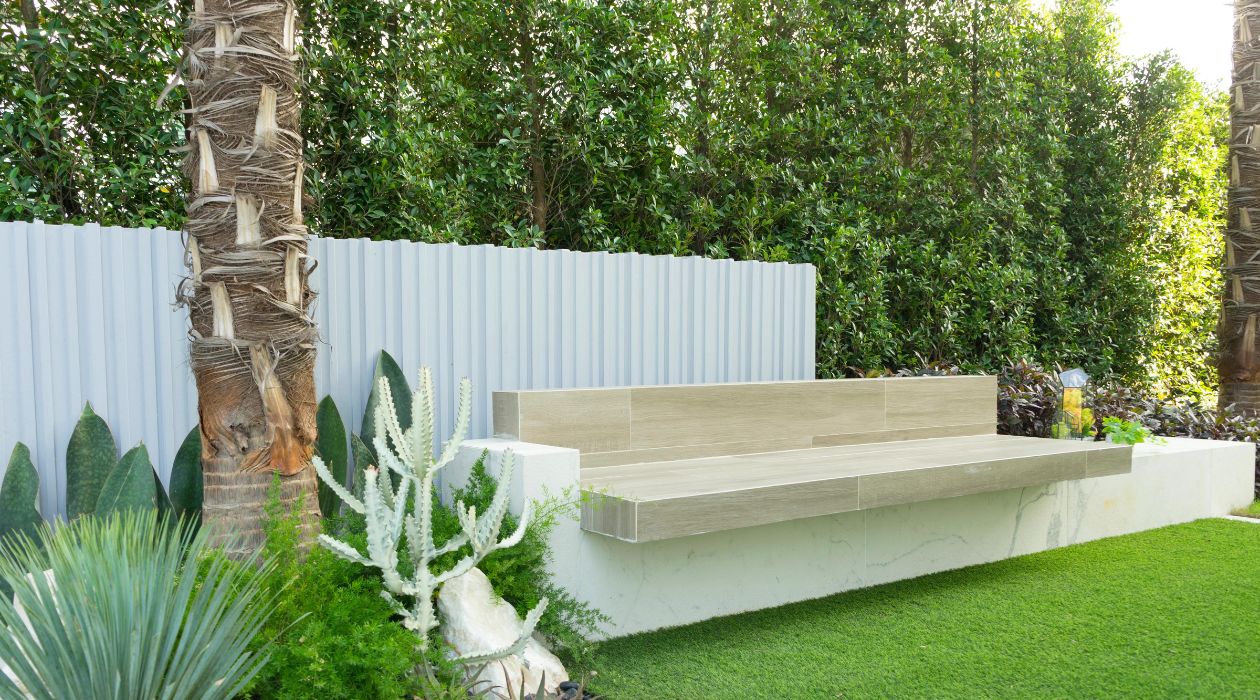
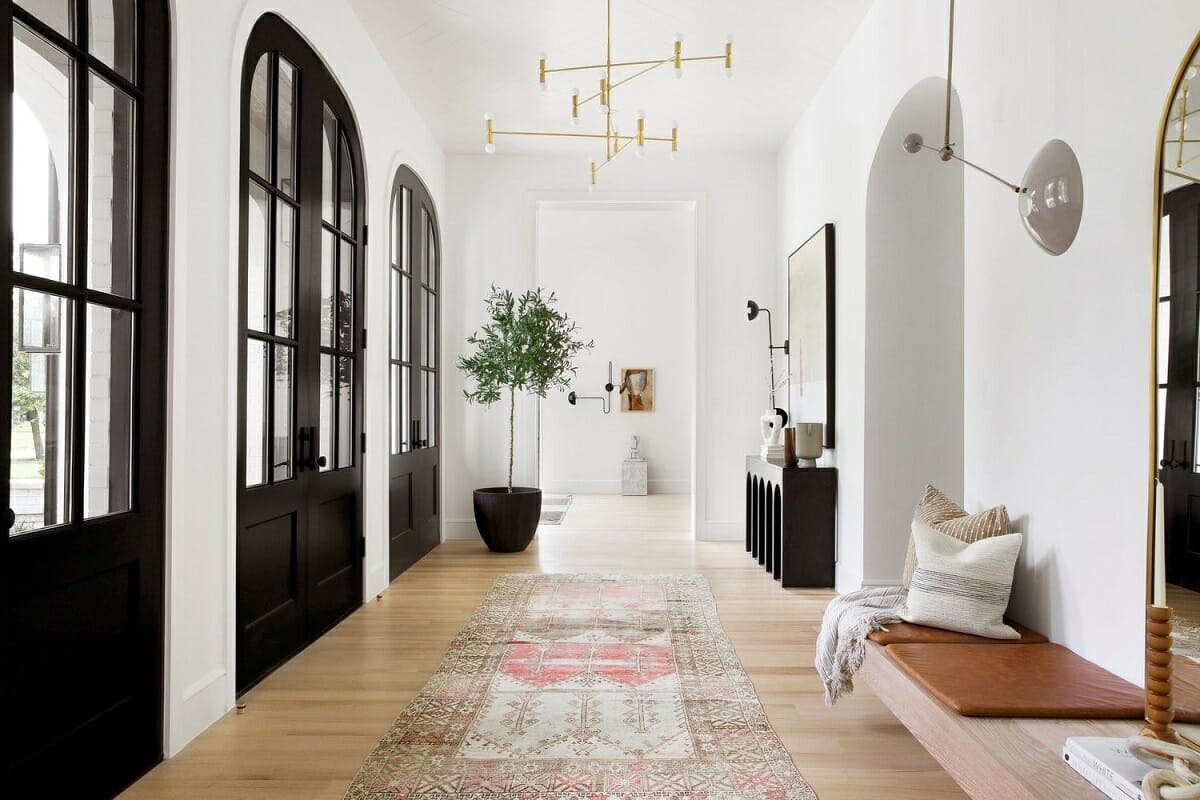
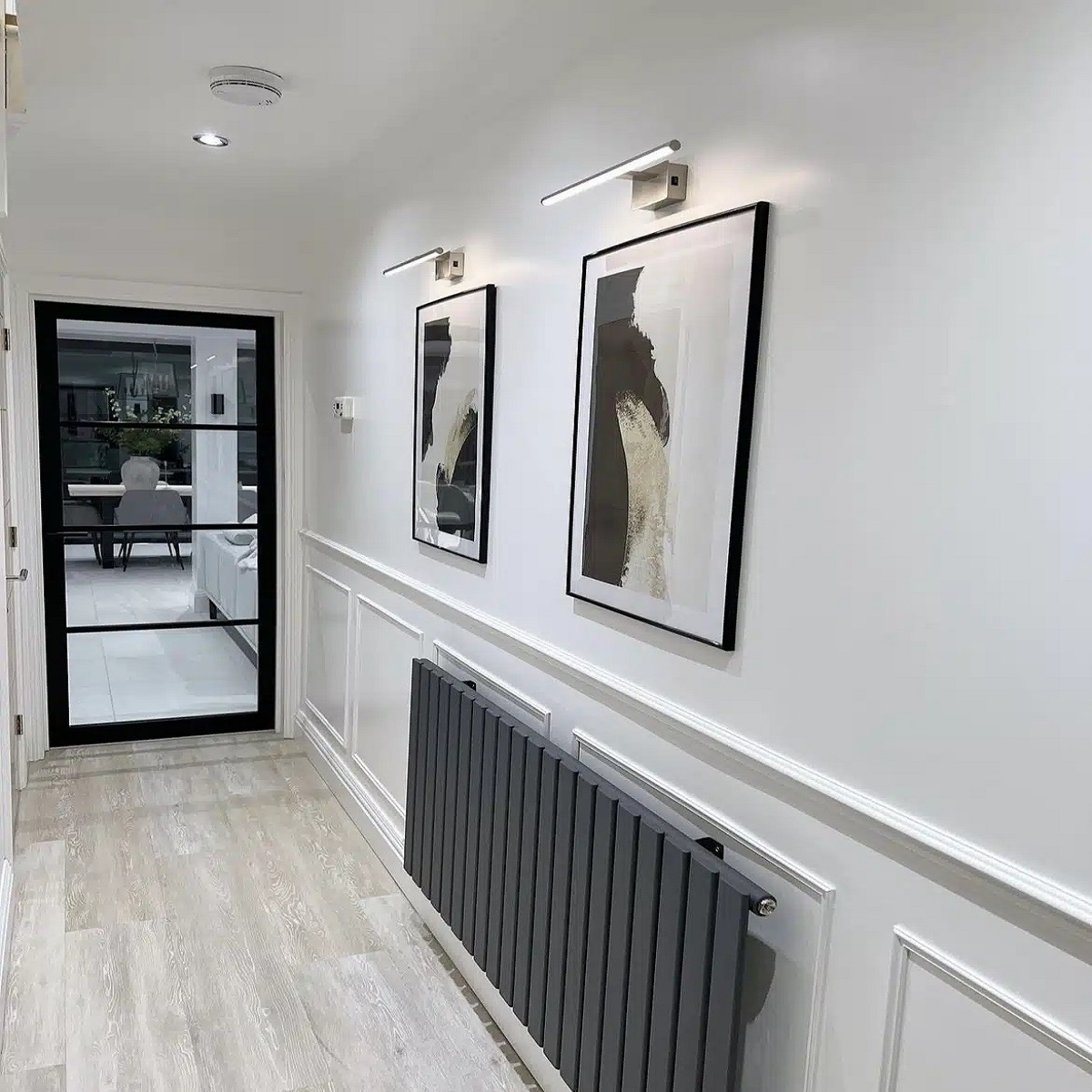
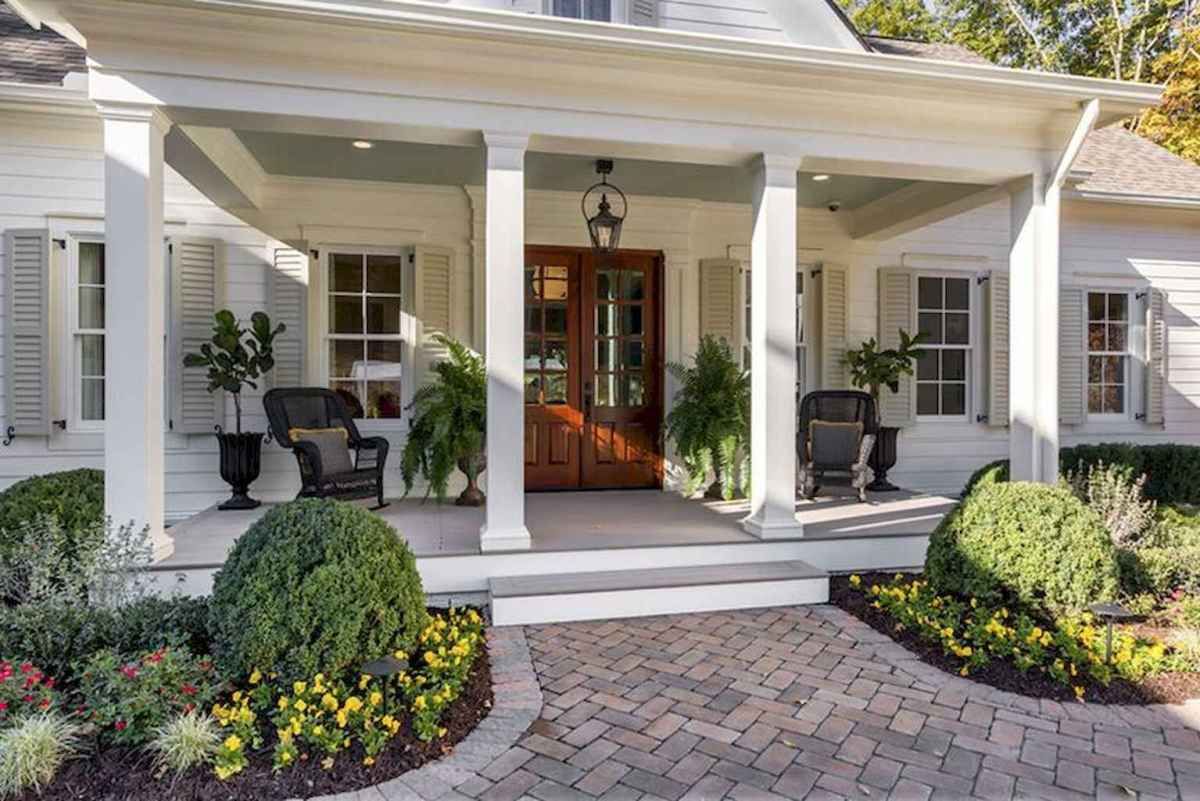
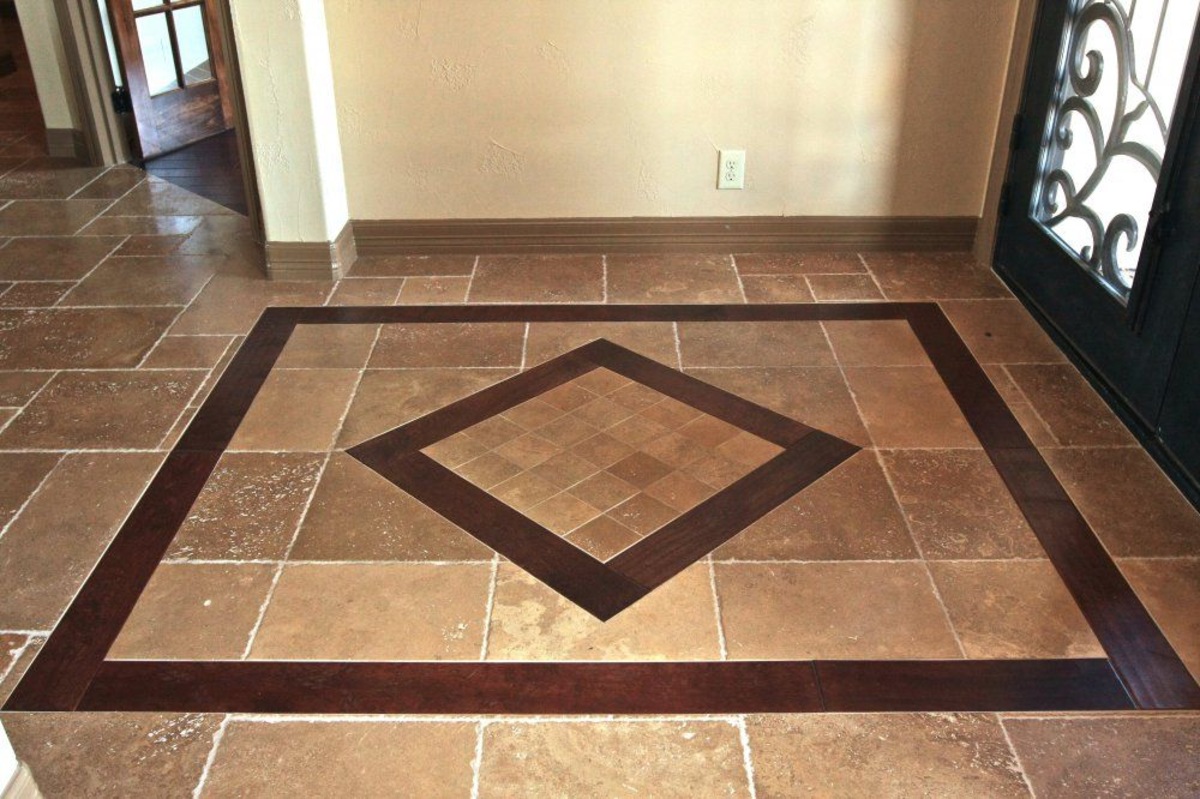
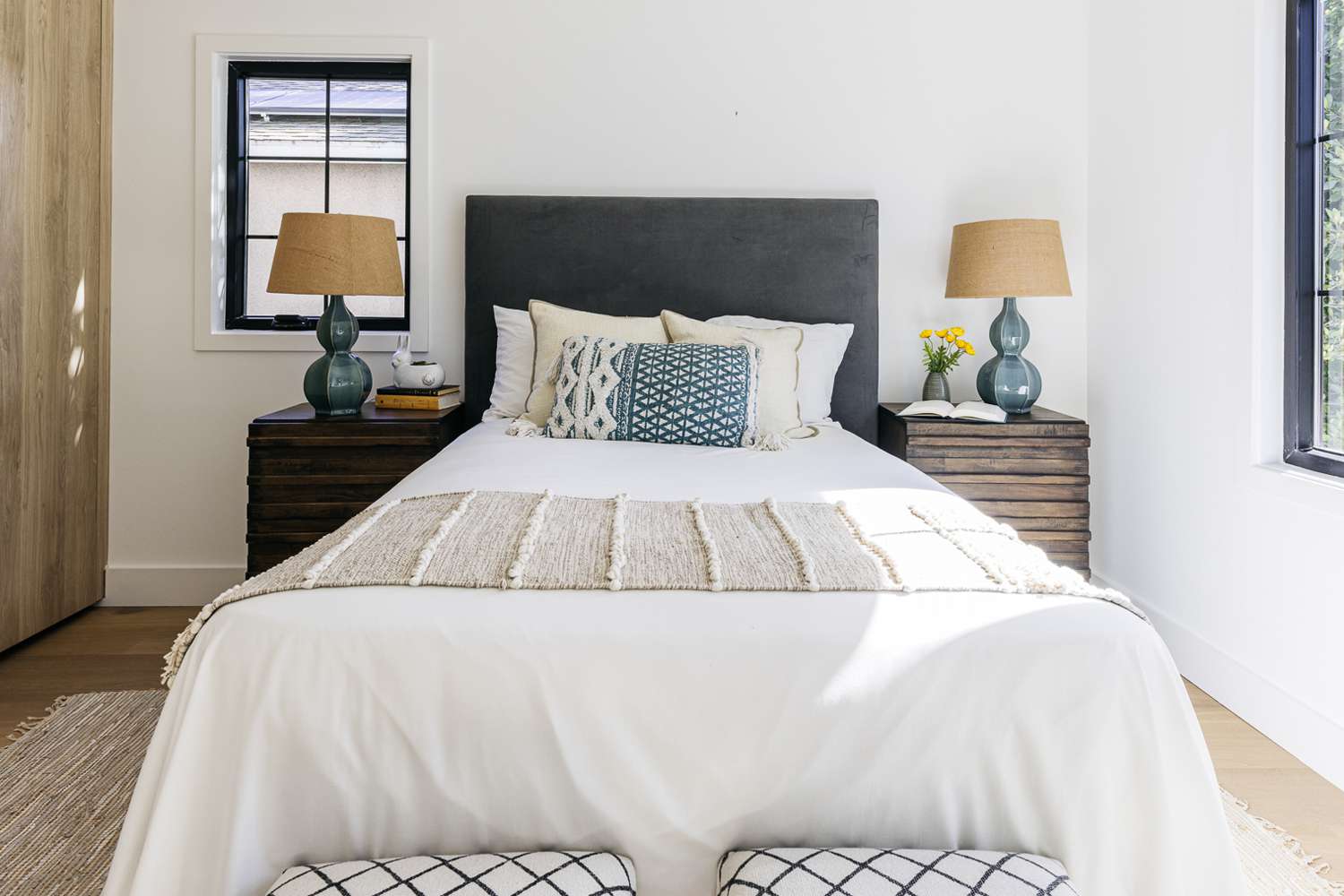
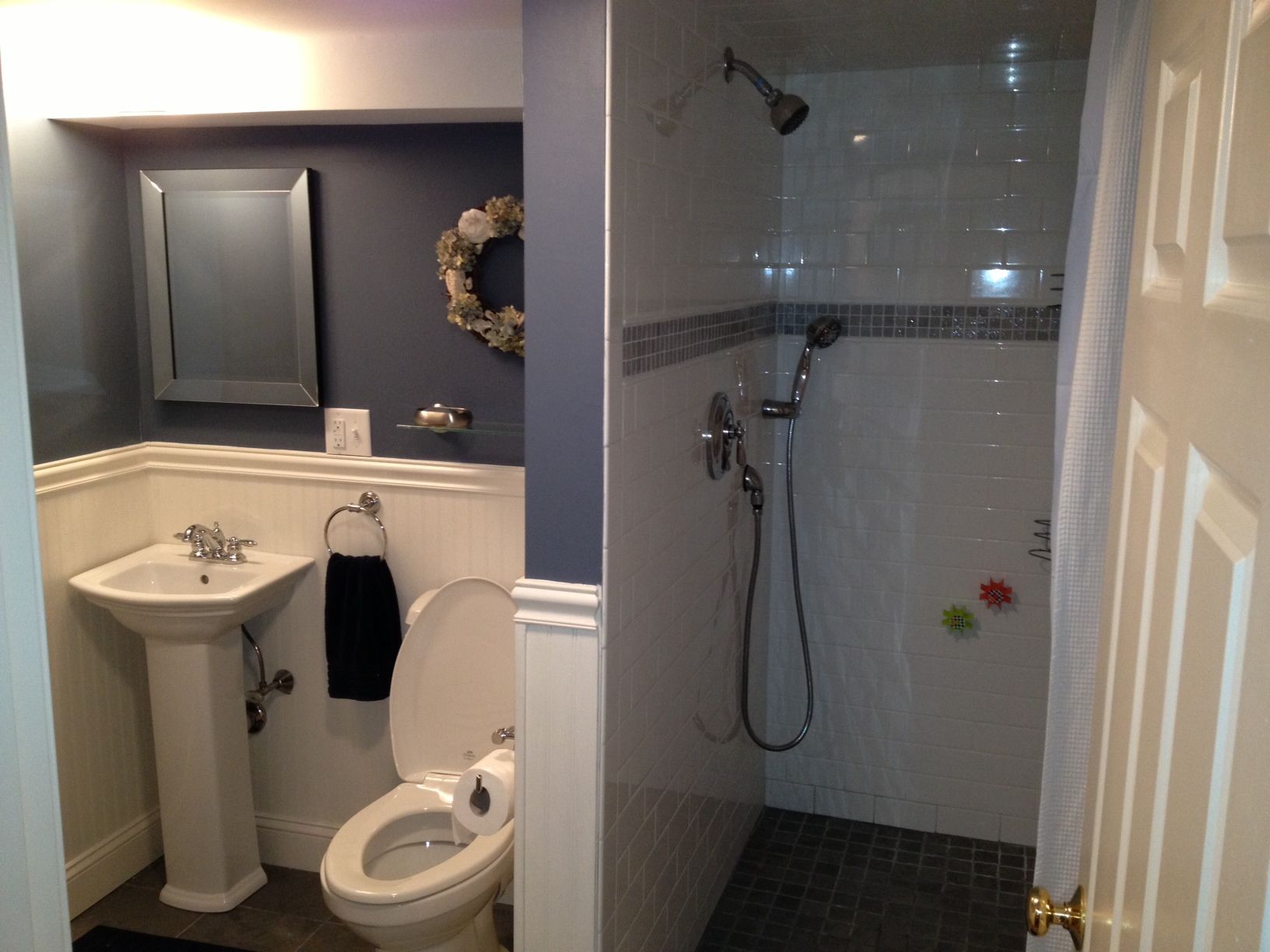
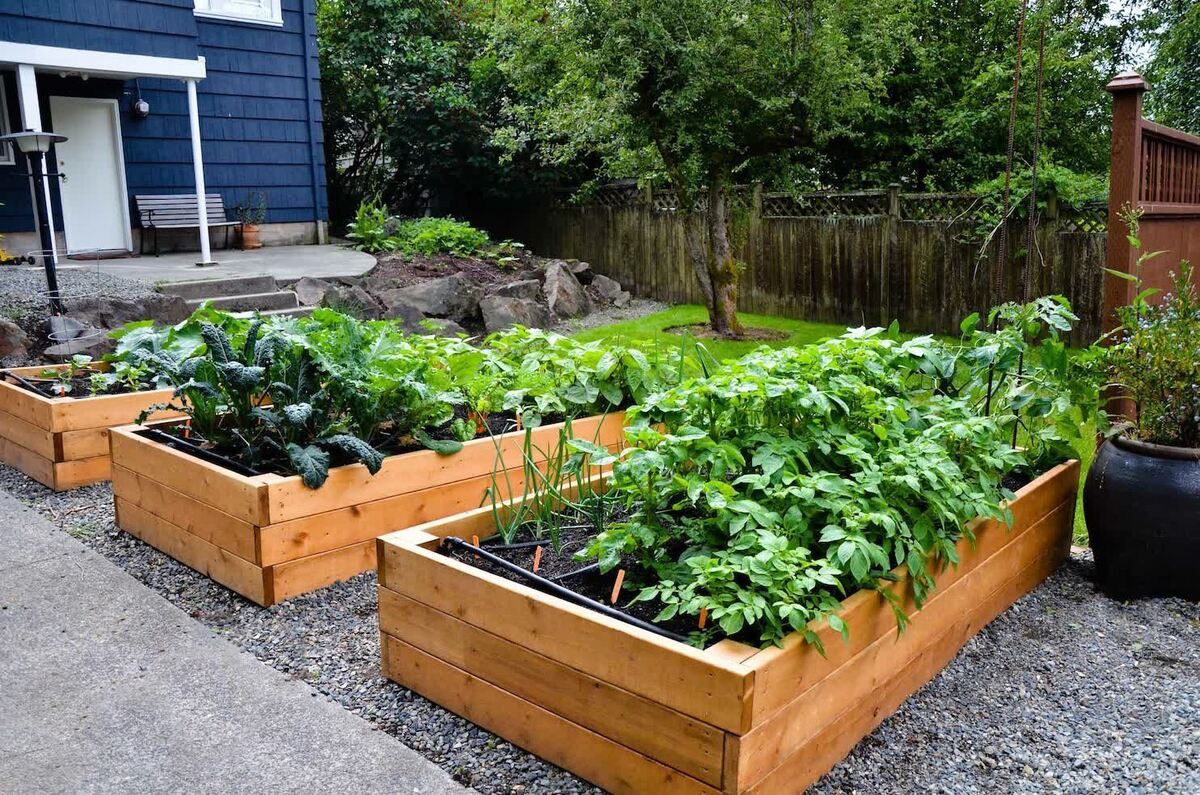
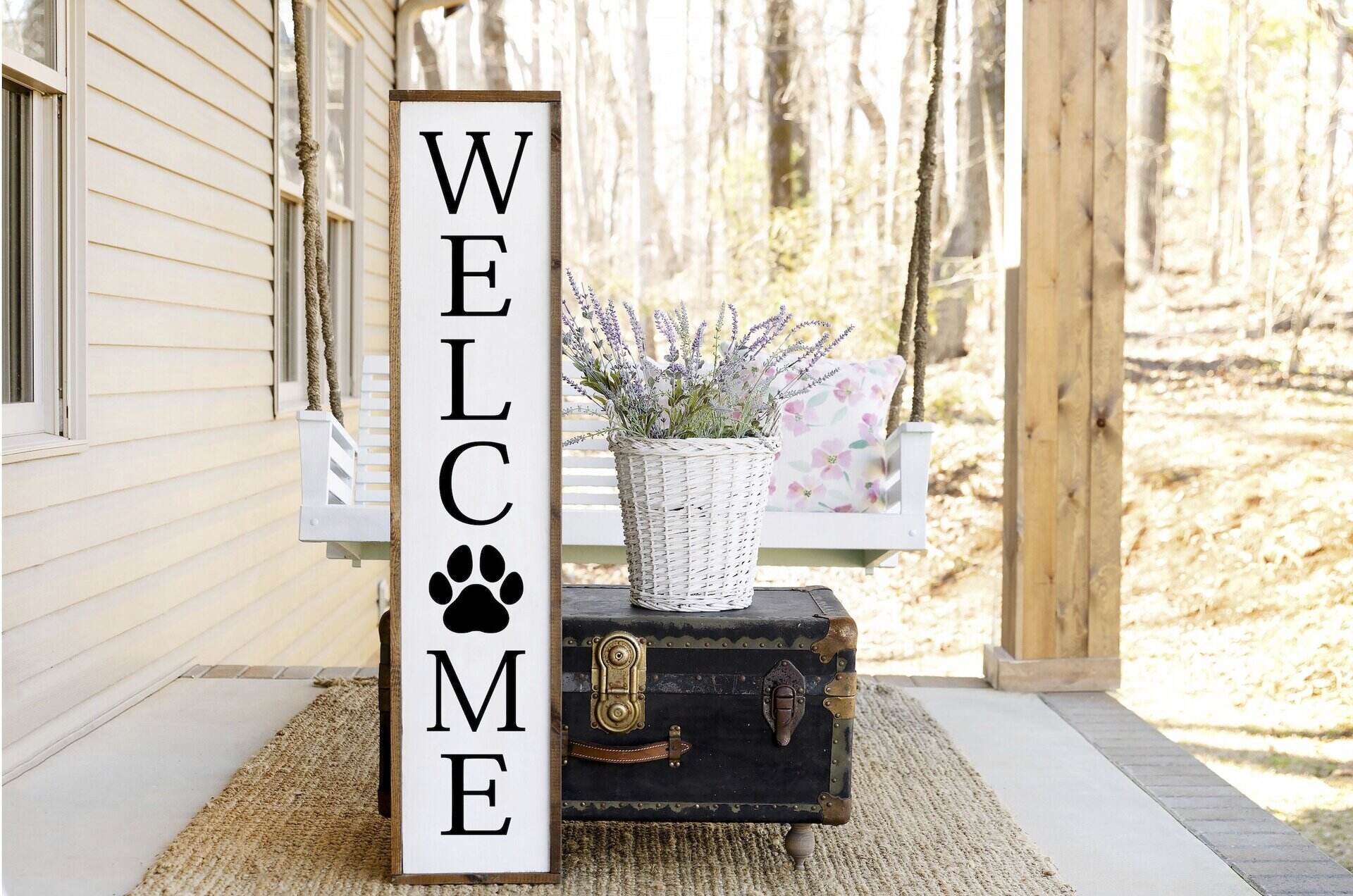
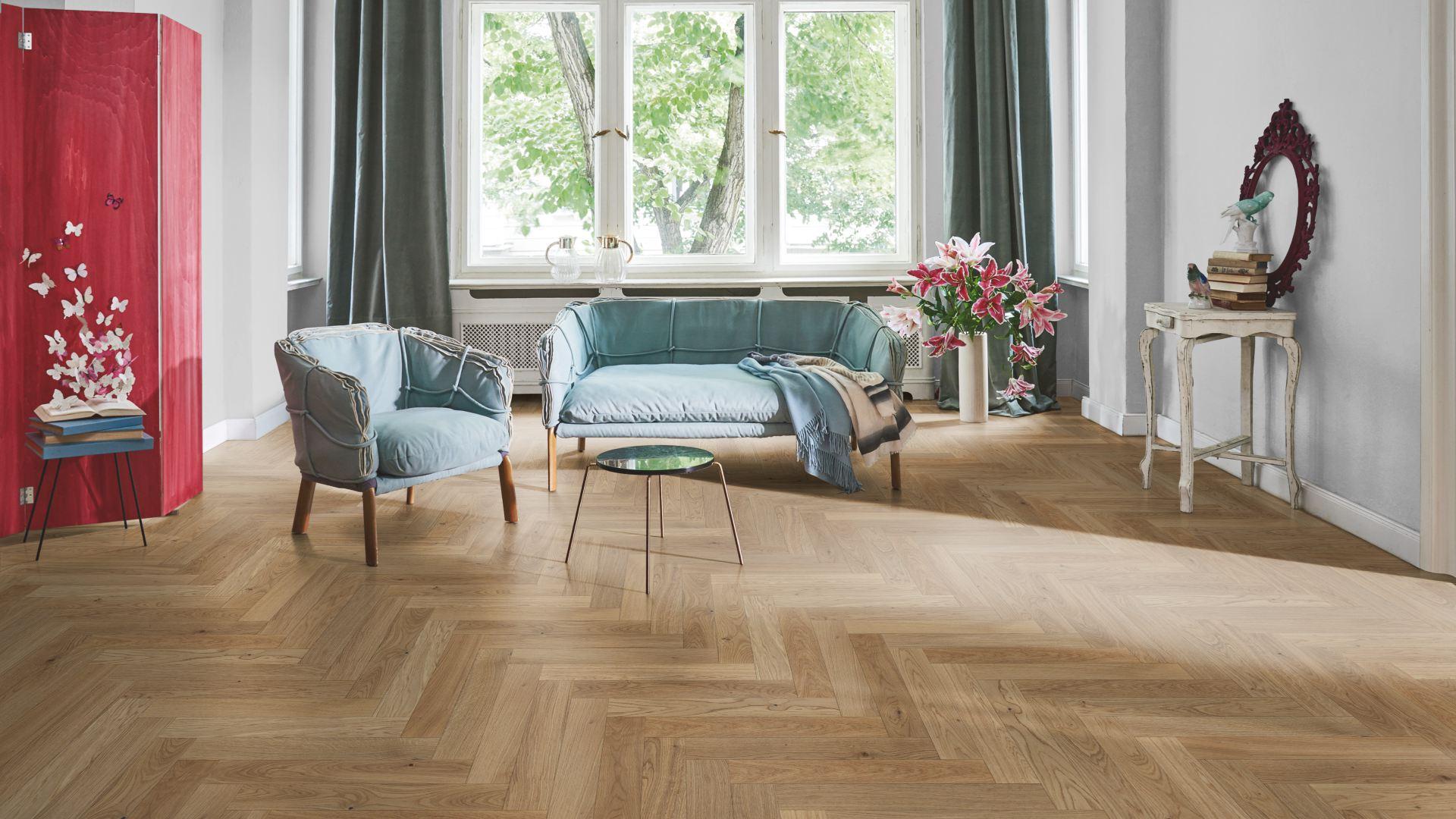
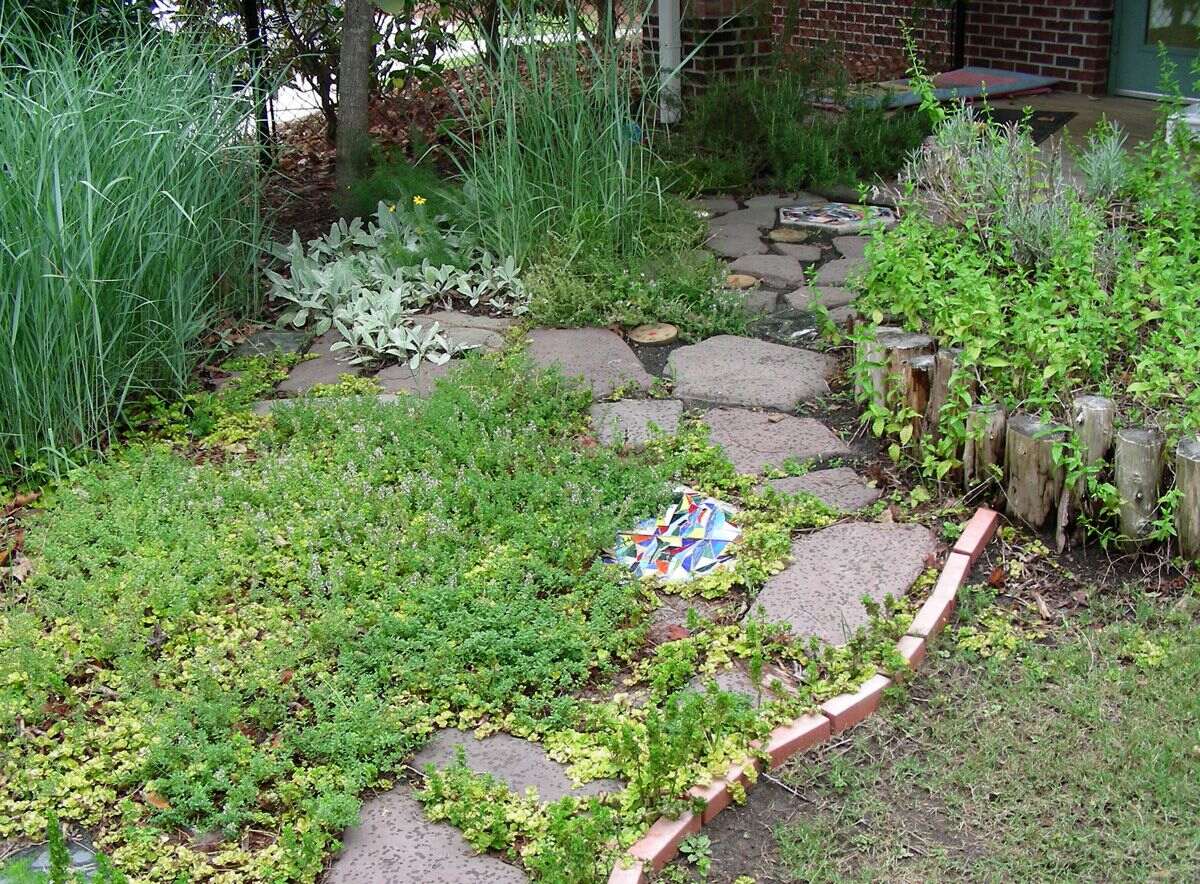
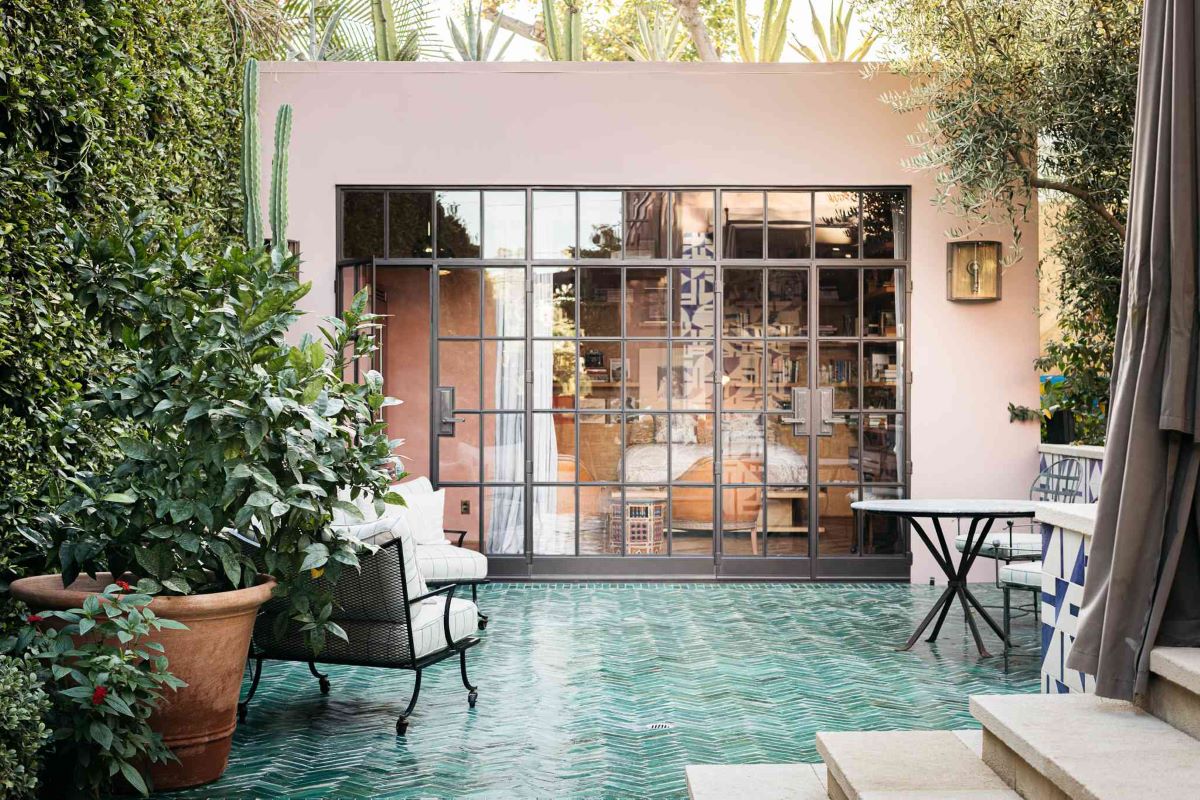

0 thoughts on “Front Garden Ideas: 15 Ways To Create A Welcoming Impression”